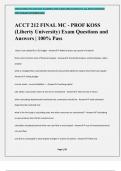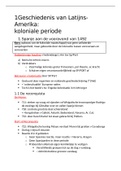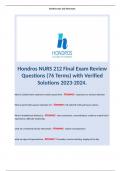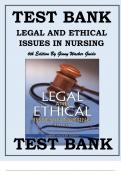Exam (elaborations)
Helwig NCE & CPCE Prep (HGrD). Top Exam Questions and answers, 100% Accurate, graded A+
- Course
- NCE & CPCE
- Institution
- NCE & CPCE
Helwig NCE & CPCE Prep (HGrD). Top Exam Questions and answers, 100% Accurate, graded A+ What is the definition of development? (HGrD) Systematic changes and continuities in the individual that occurs between conception and death. What are the three broad areas of systematic change in develo...
[Show more]












